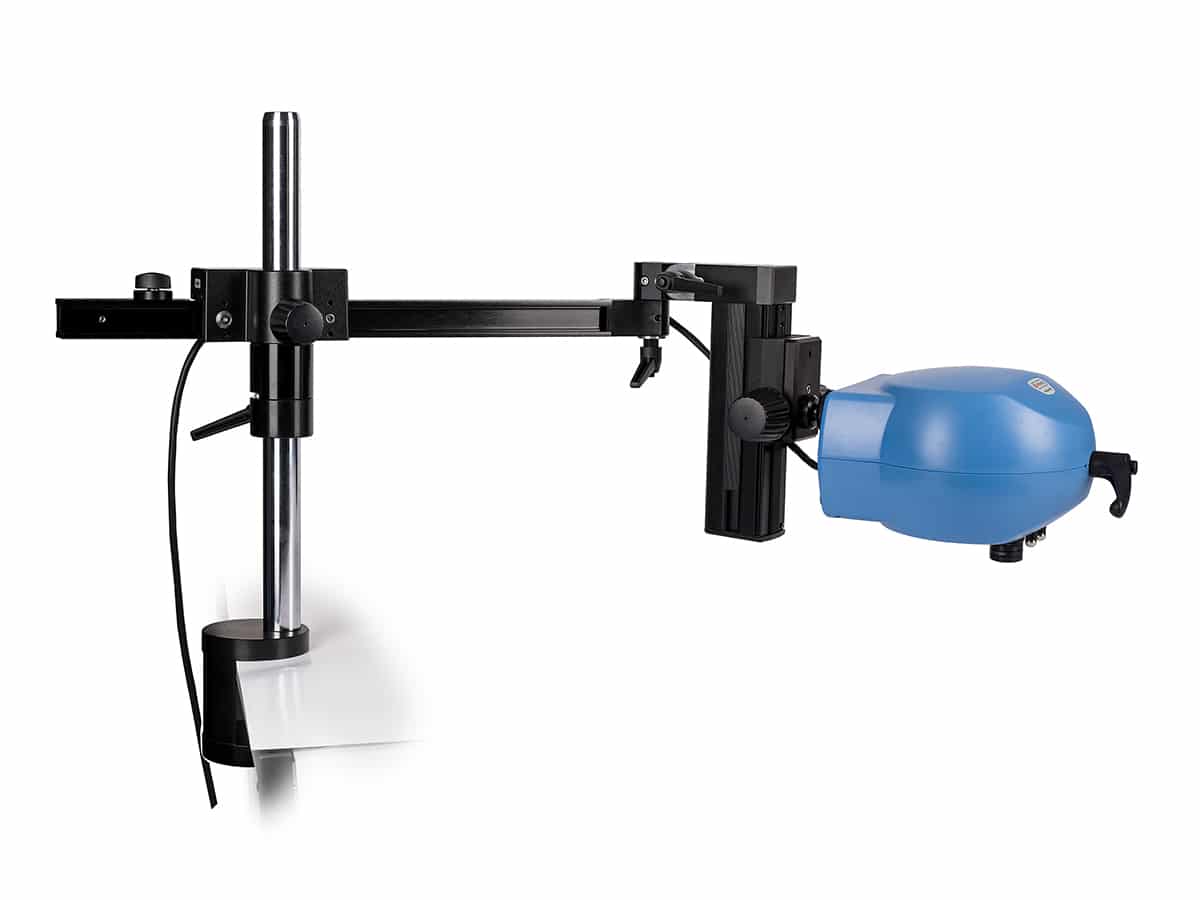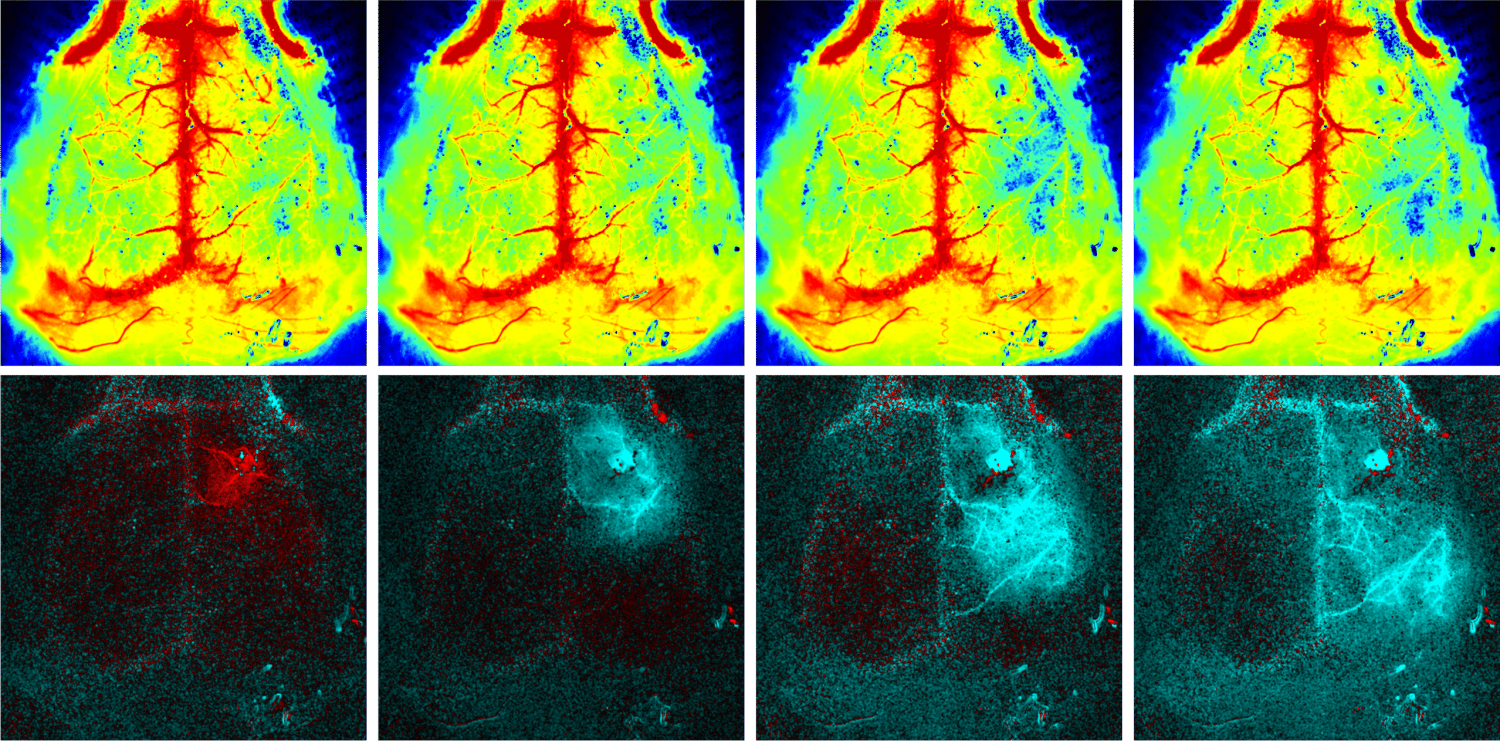Cortical Spreading Depolarization (CSD)
![]()
Spreading depolarization (SD) is the generic term for all waves of abrupt, near-complete breakdown of the neuronal transmembrane ion gradients that cause cytotoxic edema and propagate at about 3 mm/min in cerebral gray matter. The SD continuum describes the spectrum from short-lasting SDs in metabolically intact tissue to SDs of intermediate duration to terminal SD in severely ischemic tissue. Accordingly, SDs occur in human diseases; from the harmless migraine aura to stroke to circulatory arrest. This means that there are overlaps but also large variations in mechanistic aspects along the continuum. For example, SD induces either transient hyperperfusion variably followed by mild oligemia in normal tissue (normal neurovascular response) or severe hypoperfusion (inverse neurovascular response = spreading ischemia) variably followed by hyperemia in tissue at risk for progressive injury.1Dreier, J. P. (2011). “The role of spreading depression, spreading depolarization and spreading ischemia in neurological disease.” Nat. Med 17(4): 439-447.
Real time imaging
Perimed was the first company to commercialize laser-based microcirculation imaging and has over the past 40 years been the world leader in perfecting those techniques.
PeriCam PSI is used to record hemodynamic changes due to needle prick or topical application of highly concentrated potassium solution ((2), (3), (4)). Using the instrument, two-dimensional maps of cortical cerebral blood flow are obtained with very high spatial and temporal resolution. Regions of interest can be defined (circles) in which cerebral blood flow is quantified over time.
PeriCam PSI can measure up to ~100 images per second. This makes it possible to see fast dynamic changes, such as pulsations caused by heart rate, at high image quality.
References:
- Dreier, J. P. (2011). “The role of spreading depression, spreading depolarization and spreading ischemia in neurological disease.” Nat. Med 17(4): 439-447.
- The antagonism of prostaglandin FP receptors inhibits the evolution of spreading depolarization in an experimental model of global forebrain ischemia. Dániel P. Varga, Írisz Szabó, Viktória É. Varga, Ákos Menhyárt, Orsolya M. Tóth, Mihály Kozma, Armand R. Bálint, István A. Krizbai, Ferenc Bari, Eszter Farkas. 2020, Neurobiology of Disease, Vol. 137, p. 104780.
- Na+/K+-ATPase α isoform deficiency results in distinct spreading depolarization phenotypes. Clemens Reiffurth, Mesbah Alam, Mahdi Zahedi-Khorasani, Sebastian Major and Jens P Dreier. 3, 2019, Journal of Cerebral Blood Flow & Metabolism, Vol. 40, pp. 622-638.
- Systemic administration of l-kynurenine sulfate induces cerebral hypoperfusion transients in adult C57Bl/6 mice. Dániel Péter Varga, Ákos Menyhárt, Tamás Puskás, Ferenc Bari, Eszter Farkas, Zsolt Kis, László Vécsei, József Toldi, Levente Gellért. 2017, Microvascular Research, Vol. 114, pp. 19-25.
Case example:
Center for Stroke Research Berlin, Charité University Medicine Berlin
Prof. Dr. med. Jens P. Dreier Charité University Medicine Berlin, Germany Center for Stroke Research Berlin
The inverse neurovascular response to SD is observed as a spreading perfusion deficit causing prolongation of SD (Dreier 2011). Laser Speckle Contrast Analysis (LASCA or LSCI) is an ideal tool to differentiate the normal (fig. 1) from the inverse neurovascular response to SD (fig. 2) because it visualizes the perfusion changes in space and time, and is easily combined with various electrophysiological methods to measure, for example, SD or additional variables such as tissue partial pressure of oxygen.
Please fill in the form to get more information
Disclaimer: It is possible that the products on the Perimed website may not be cleared for sale in all markets.




